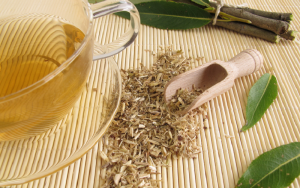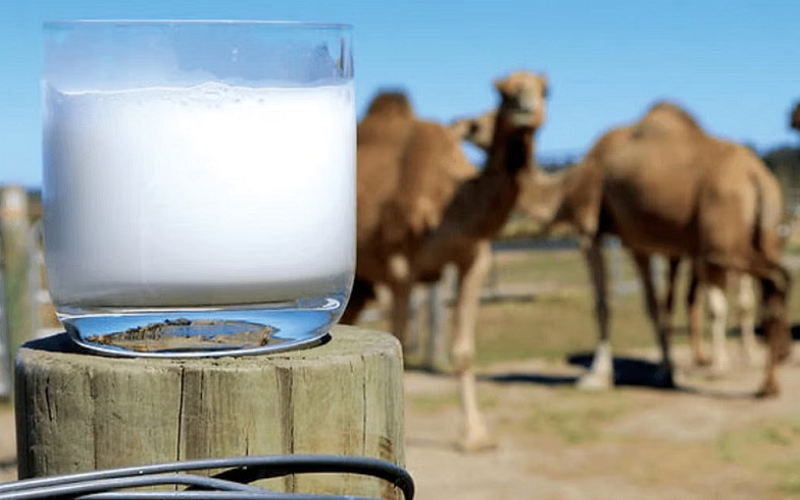
Despite being a staple in some cultures for centuries, it’s only recently that the health and wellness communities in the Western world have started recognizing camel milk as a viable alternative to cow’s milk. Here we shed light on the myriad benefits and unique properties of this nutrient-rich beverage.
Contents
History of Camel Milk Consumption
The use of camel milk spans thousands of years, highlighting the strong historical and cultural ties many societies have with this robust creature of the desert. Understanding its historical use can lend perspective to its emerging status as a global superfood and offer insights into why it was valued in the first place.
Brief Description of Camel Milk
As the name implies, camel milk is a milky-white substance produced by female camels, much like cow’s milk from cows. It has a creamy texture and a slightly sweet, nutty flavor. While it might sound exotic to many, camel milk has been a primary source of nutrition for various cultures around the globe, particularly in the Middle East, North Africa, and parts of Asia, for centuries. Now, as it’s making its way to the Western world, many are starting to ask: Could camel milk be a nutritious alternative to cow’s milk?
Ancient Cultural Practices
The domestication of the camel dates back thousands of years, with evidence of camel milk consumption dating as far back as 3000 BC. Primarily, camel-keeping societies in harsh, arid climates such as the Bedouin Arabs of the Middle East and various tribes in Northern Africa have relied on camel milk as a vital source of hydration and nutrition. Given the camel’s extraordinary ability to survive and produce milk in extreme conditions where cows, goats, and sheep might not thrive, camel milk has long been an essential dietary staple for these cultures.
The pastoralists of Somalia and Ethiopia, for instance, have a rich history of camel milk use. It is not only consumed fresh but also fermented to extend its shelf life and create a slightly sour, yoghurt-like product. It’s worth noting that in these traditional societies, camel milk was valued not only for its nutritional contribution but also for its medicinal properties [1].
Current Consumption Trends
Fast forward to the 21st century, the consumption of camel milk is no longer restricted to arid regions where camels roam. With the advent of modern transportation and refrigeration technologies, camel milk is becoming increasingly accessible to the global market.
Consumption trends are changing as a result. People from all walks of life are beginning to recognize the potential benefits of camel milk. In the United States, Australia, and parts of Europe, camel dairies are starting to crop up. Similarly, various startups are taking the lead in marketing camel milk and camel milk products to health-conscious consumers.
While still niche, the camel milk industry is growing steadily. Its unique nutritional profile, coupled with a rise in dairy allergies and lactose intolerance, is prompting more and more people to explore this ancient, nutrient-rich beverage as a modern-day superfood.
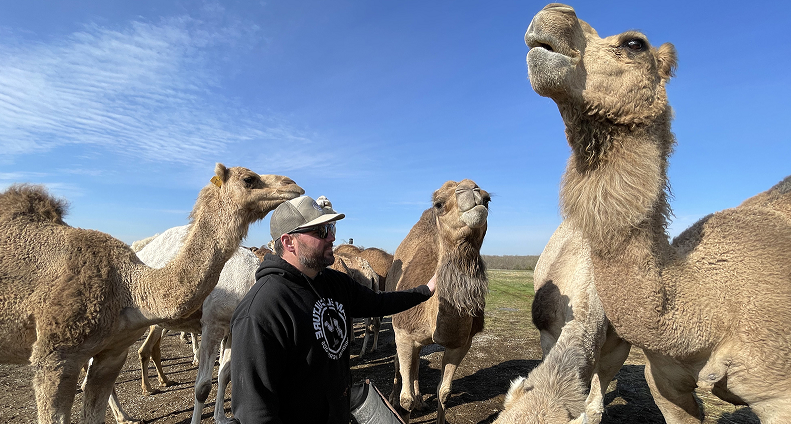
Nutritional Composition of Camel Milk
The growing interest in camel milk largely stems from its impressive nutritional profile. When compared with cow’s milk, it is evident that camel milk holds its own, and even excels in some aspects.
Comparison of Nutrient Content with Cow’s Milk
Like cow’s milk, camel milk is a rich source of protein, vitamins, and minerals. It contains comparable levels of protein and a similar array of amino acids, making it a good source of quality protein. The carbohydrate content, predominantly lactose, is also similar in both types of milk.
However, there are some key differences. Camel milk is generally lower in saturated fat and has a different composition of fatty acids. Moreover, it has a higher concentration of vitamin C, iron, potassium, and other essential minerals, making it particularly beneficial in diets deficient in these nutrients.
One crucial aspect where camel milk stands out is in its lactose content. While the amount is similar to that of cow’s milk, studies have shown that camel milk lactose is better tolerated by individuals with lactose intolerance, making it a potential alternative for those unable to consume regular dairy [2].
Highlighting Unique Nutrients in Camel Milk
While the nutritional value of camel milk is impressive in itself, there are some unique properties that set it apart. For instance, camel milk contains protective proteins such as lactoferrin, immunoglobulins, and lysozyme, which exhibit potent antimicrobial and immunomodulatory effects. Some research even suggests that these proteins might have anti-cancer properties, although further investigation is required in this field.
Moreover, camel milk is a rich source of insulin-like proteins, which has sparked interest in its potential role in managing diabetes. In fact, some studies have reported improved blood sugar control and reduced insulin requirements in individuals with type 1 diabetes consuming camel milk, although this needs to be confirmed with larger clinical trials.
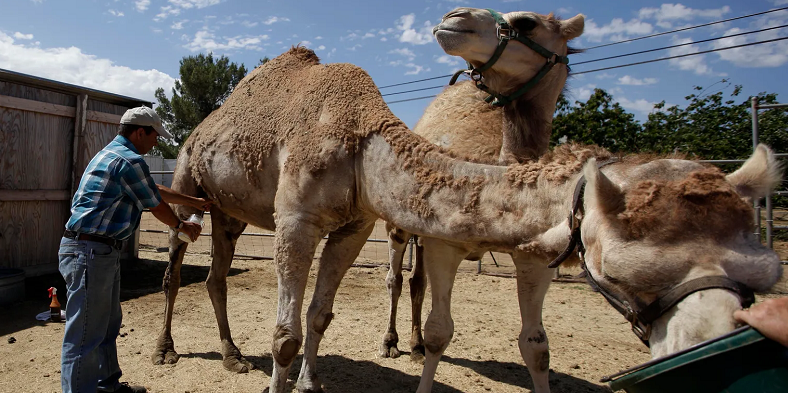
Health Benefits of Camel Milk
Given its unique nutritional profile, it’s no surprise that camel milk is associated with numerous health benefits. While more research is needed, preliminary studies and anecdotal evidence suggest that it may have potential advantages over traditional cow’s milk, particularly for those with specific health concerns.
Digestive Health and Lactose Intolerance
As we touched on earlier, camel milk is often better tolerated by individuals with lactose intolerance compared to cow’s milk. This is because the structure of lactose in camel milk is slightly different, making it easier to digest for some people. This opens up the possibility of enjoying a glass of milk or a milk-based recipe for those who previously had to avoid such due to digestive issues [3].
Immune System Support
The protective proteins in camel milk, including lactoferrin and immunoglobulins, have been shown to exhibit strong antimicrobial and immunomodulatory properties. These can potentially boost the body’s natural defense against pathogens and regulate immune response, thereby supporting overall immune health [4].
Potential Benefits for Diabetes
One of the most intriguing areas of research regarding camel milk is its potential role in managing diabetes. The presence of insulin-like proteins and other factors in camel milk has been found to have a blood sugar-lowering effect. Some studies suggest that regular consumption of camel milk can lead to improved blood sugar control and reduced insulin requirements in individuals with type 1 diabetes. However, more rigorous clinical trials are needed to solidify these findings and to investigate the potential use of camel milk as a complementary approach in diabetes management [5].
Possible Role in Autism Management
Interestingly, there’s also some preliminary research suggesting that camel milk might benefit individuals with autism spectrum disorders (ASD). The proposed mechanism is that the unique proteins and peptides in camel milk may help to mitigate neuro-inflammation, a condition often observed in those with ASD. It’s important to note, however, that the research is still in its early stages, and larger studies are needed to confirm these findings [6].
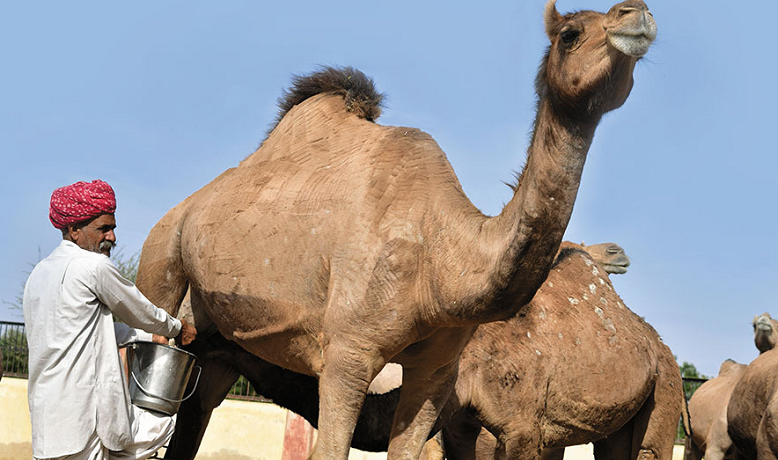
Taste, Culinary Uses, and Availability of Camel Milk
Camel milk isn’t just about health benefits and sustainability. It also has a distinctive taste and culinary versatility that adds a new dimension to your cooking. Plus, despite what you may think, it’s becoming more widely available for those who want to give it a try.
Description of Camel Milk’s Taste and Texture
For those who haven’t tried camel milk, you might be wondering, “What does it taste like?” The answer, of course, can vary from person to person, but generally, camel milk is described as having a clean, slightly sweet, and nutty flavor, with a hint of a salty undertone. It’s also a bit creamier and heavier in texture compared to cow’s milk but without the thickness of goat’s milk. All these characteristics make it an intriguing alternative for those looking to try something new.
Ideas for Using Camel Milk in Cooking and Baking
The culinary applications of camel milk are as diverse as those of cow’s milk. You can drink it straight, use it in coffee or tea, or incorporate it into smoothies for a nutrient boost. It can also replace cow’s milk in your baking and cooking recipes, adding a unique twist to your dishes.
Fermented camel milk, or camel milk yogurt, is also a popular choice in many traditional societies, and it’s starting to gain traction elsewhere. Camel milk cheese is another product that’s been gaining attention, although it’s more challenging to produce due to the unique composition of camel milk.
Information on Where to Buy Camel Milk
Camel milk might seem like an exotic item that’s hard to come by. However, with its rising popularity, it’s becoming more readily available. Many health food stores and larger supermarkets are beginning to stock it. Online platforms also offer camel milk in various forms—fresh, frozen, or powdered—for those who don’t have local access. Keep in mind, though, that the availability can greatly depend on your location, and it’s typically more expensive than cow’s milk due to production costs and supply-demand dynamics.
References
[1] Would you drink camel milk?
[2] Miraculous Properties of Camel Milk and Perspective of Modern Science
[3] Nutritional, antimicrobial and medicinal properties of Camel’s milk: A review
[4] The Antioxidant, Anti-Inflammatory and Immunomodulatory Effects of Camel Milk
[5] Camel Milk FAQ
[6] Saudi entrepreneur and Amish farmers bring camel milk to US





